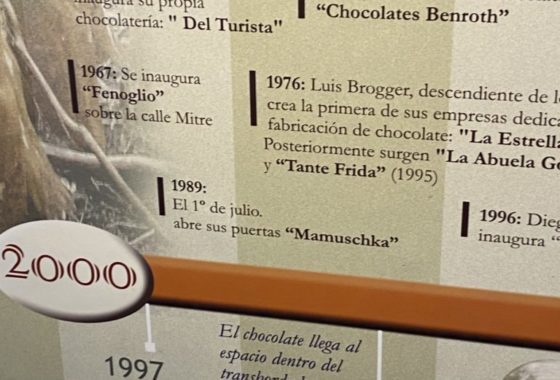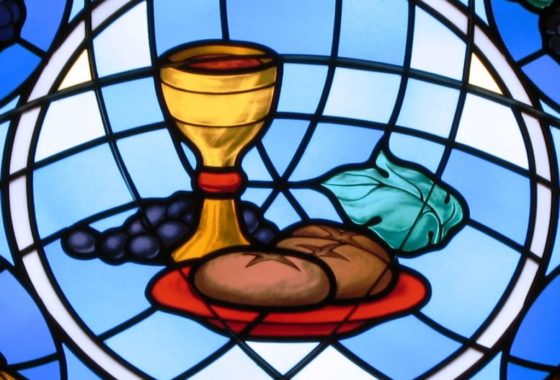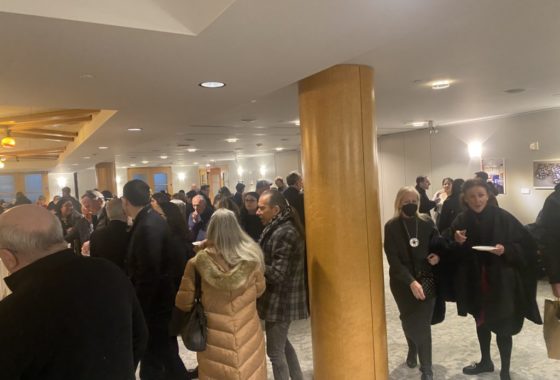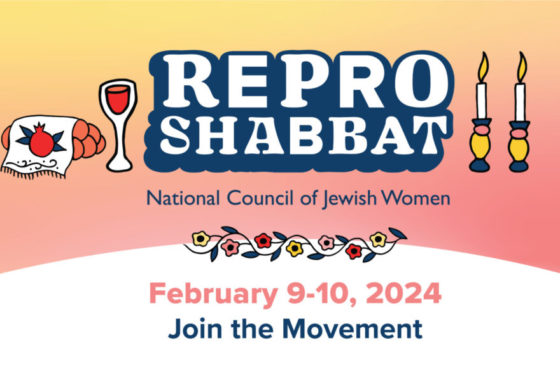On the Trail of Belgian Chocolate Museums
As I am one of those people who can barely manage for only a few days without chocolate, I am surprised to find myself overwhelmed by the amount of chocolate in Belgium. Belgium offers a very intense chocolate experience, with over 2000 chocolate makers and outlets. It starts before I even land, with recommendations regarding the best chocolate in Antwerp and Leuven happily supplied by a seat mate. I find chocolate everywhere indeed: Served alongside the hot chocolate ordered in a tea house; offered as a spread for the bread at my bed and breakfast; available homemade at almost each one of the many patisseries. A Belgian tourist information booklet touts a reasonably priced “Brussels All in Chocolate” packages featuring, for instance, a stay at a four star hotel, with breakfast and a voucher for pastry accompanied by a hot drink at renowned Wittamer Patisserie or, another option, a stay at a three star hotel, with breakfast, champagne, a box of chocolates and admission to the Museum of Chocolate and Cocoa. The business section of the phone books for the cities of Lieges and Bruges contain several pages of listings for chocolate fabricators and stores.

Different theories explain chocolate’s arrival in Belgium. Chocolate stores first appear in Belgium at the end of the 1600’s. Belgium was, at the time, under Spanish rule and could access Spain’s monopoly on chocolate. According to the information provided at the Museum of Chocolate and Cocoa (Musee du Cacao et du Chocolat), chocolate was brought to the Abbaye de Baudeloo in Ghent in 1635. Others argue that chocolate was initially used medicinally in Belgium. At the end of the 17th century Emanuel Soares de Rinero, originally from Portugal or Spain, possibly a converso, received the first permit to fabricate chocolate in Brabant. Belgian chocolate was encountered as a beverage in Brussels in 1697 by the Mayor of Zurich who then introduced it into Switzerland.
Today’s chocolate opportunities in Belgium often cluster in groupings of Godiva and Neuhaus while franchises of Leonides share the same street. In downtown Brussels Pierre Marcolini, Godiva and Neuhaus each stake out a corner of one intersection, just half a block from the well known, family-owned Wittamer bakery and chocolate store, founded in 1910.

At the old style, closed shopping mall, the Galleries St. Hubert of Brussels, I count five chocolate stores in very close proximity. In addition, many smaller stores in Brussels, Bruges and elsewhere vie for the chocolate lover palate. Happily, many of these stores offer free samples. I sometimes ask about the attendant’s favorite and once again receive a sample. Within a mere couple of hours, I collect much more than I can eat in several months.
Conversation with people living in Brussels triggers arguments over who makes the tastiest chocolate, the finest marzipan, the most expensive and conversely the cheapest chocolate. When I sit at a Brussels hotel to access the internet, the attendant apologizes for using cocoa powder instead of real chocolate to make my hot chocolate. By the end of one week, I decide that the Wittamer hot chocolate surpasses those I had tasted in Lieges, in Bruges, and in Brussels.
In 1912 Belgium’s Jean Neuhaus developed the praline (a hard chocolate shell casing for various confections inside). While pralines are found everywhere, less available are single origin chocolates which are very popular in France and elsewhere. I did, however, find them at the chic Pierre Marcolini where I purchase a “Limited Edition” bar made from Porcelana cacao from Mexico, considered a rare treasure. ( Porcelana comes from the best of the cacao species, the criollo. It is called porcelana due to the translucent white color of the bean.) Belgians place great value on homemade and fresh chocolates that are generally less sweet than American chocolate. Also, Belgian chocolate is often ground more finely than elsewhere– to 18 micron–thus creating its special flavor and texture. Belgian Godiva Chocolate differs from American Godiva in these respects. The many Belgian artisan chocolatiers tend to use Callebaut or Belcolade couverture. By the way, Campbell’s now owns Godiva and Kraft owns Cote d’Or. While the European Union definition of chocolate currently permits 5% vegetable oil in place of cocoa butter (not dairy butter, rather the oil that comes off the cacao beans in the processing), many Belgian chocolatiers proudly maintain a commitment to pure 100% cocoa mass.
The several chocolate museums in Belgium and live demonstrations at various shops, afford the opportunity to use some calories learning more about chocolate rather than only eating it. The website visitbelgium.com/chocol.htm posts a somewhat current listing of the country’s five chocolate museums, the approximately nine stores with chocolate demonstrations, and there are probably more than that. Check and double check the hours and the availability of the demonstrations, however. Be prepared to pay admissions fees at most, if not all. Before Christmas and Easter many of the chocolate demonstrations are suspended and some are available only for groups and by reservation.
I learn to check the details more carefully after a twenty minute side trip from Bruges to Oostende to see the P & J Chocolate Mini-Museum. As I approach P and J, I see several British flags flying high and five or six tourist buses parked in front. This store, with its very few posters about chocolate, barely qualifies as a mini-museum. Rather it caters to British visitors who cross the Channel to buy Belgian chocolate, cigarettes and liquor at vastly reduced rates and taxes. The chocolate tastes mediocre but comes in many shapes including female and male body parts stacked right next to the Santas.

However, I have great fun at another stop on the list, at Planête Chocolate in Brussels. They schedule demonstrations regularly on Saturday afternoons and in addition offer a café with tasty selections, a store of chocolate treats and promises of chocolate made with 100% cocoa mass. Sundays offer music and as well. Our guide, John, animatedly tells the story of his grandfather’s creation of the company in around 1912 after he sailed to Gaudelajara to pick up a cargo of cacao. As he was the first Belgian to visit that cacao plantation, the owner threw a huge party, the owner’s daughter wooed him with hot chocolate, they fell in love and married a few months later. As John puts it, alternating from French to English, the chocolate story and the company passed from generation to generation. The décor includes displays of chocolate cups, tins and molds. At the end of the informative and entertaining tour, John treats us to a taste of hot chocolate and large platters of samples, made on site downstairs, with plenty for everyone to taste several.
As my trip focuses on the chocolate museums, I am especially interested in the Musee du Cacao et du Chocolat (Museum of Chocolate and Cacao) in Brussels off the Grand Place. This three story private museum opened in 1998 and is owned by Mrs. Jo Draps, a descendant of the Godiva founder. Our tour starts sweetly with a simple biscuit cookie covered with chocolate sauce. It continues with what seems to be Mrs. Draps’ private collection of chocolate memorabilia, primarily some ancient Mayan statues, porcelain chocolate pots and cups, posters of various chocolate companies, old chocolate molds, an unusual old set of pigments used to color marzipan. The organization and design suggest old school museum. One typewritten label claims that chocolate was brought to France by Princess Anne and another, in a different section, posits chocolate was introduced to France by French explorers who drank it first in Spain and then brought it to France. The attendant seemed to know very little about the objects in the museum. The promotional DVD by the Barry Callebaut Company about growing cacao portrays African employees of the company happily explaining their work, perhaps to counteract concerns about Ivory Coast labor practices. It also incorrectly states that chocolate originates in Africa, instead of South and Central America. The museum’s little store sells chocolate of unknown origin and also makes nibbles of chocolate available. The displays include unappealing costumes made of chocolate, a dying cacao tree, and an open cacao pod preserved in formaldehyde. Since pralines were developed in Belgium, the museum also includes a live demonstration of praline making. The chocolatier explains, in both English and French, how the chocolate fills the molds for the top of the praline, how they are filled and how the chocolate forms the bottom of the praline.
While Cote d’Or also runs a museum in Halles, a suburb of Brussels, at this time they open for school groups only. I am told that many Belgians prefer Cote d’Or to the many fancier and more expensive chocolates available to them.

To find the better quality museum, Jacques Chocolate Factory and Museum in Eupen, follow the brown signs in the Eupen Centrum to an industrial section of town. Handicapped accessible, well lit and well planned, with labels mostly in French, Dutch and German, the museum/factory closes on weekends and tours are available by appointment. The exhibits display mementos of the Jacques Chocolate company, wonderful old candy dispensers, outdated chocolate making equipment and molds, a beautiful collection of chocolate pots and cups, many and varied beautiful chocolate labels, wrappings, boxes, posters, and store front signs. In a separate viewing room, the same Barry Callebaut DVD I had seen in Brussels runs on a continuous loop, showing how trucks transport the liquid chocolate couverture to this factory. While visitors are not actually able to see the chocolate being fabricated at Jacques, they may walk the catwalk above the highly mechanized area for packaging chocolate bars. In the gift shop, Mexican reproductions of ancient gods suggesting the origins of chocolate may be purchased, as well as plenty of chocolate, candy and cookie options. A few samples may be tasted.
 |
 |
 |
Choco-Story, in the delightfully picturesque Bruges, may be considered the best of these Belgian chocolate museums. If you can visit only one, this should be it. While it too has a corporate sponsor, Belcolade, that connection is toned down and the museum has much to offer from both an educational and design point of view. Opened in March 22, 2005, it exhibits the background of the building itself, the earliest history of cacao from its Mexican and Aztec beginnings, information about the fabrication of chocolate, and finally a brief, live demonstration about praline creation. Each visitor receives one praline imprinted with a Choco-Story logo. On the Sunday I visit, a constant flow of people pass through the space. I learn from the clear labels the custom of using the saucer of the trembleuse chocolate cup to drink the beverage. Marie Antoinette’s beautiful chocolate service is also a highlight. An impressive, time lapse documentary demonstrates how the cacao pod grows out of the flower. Hands on exhibits display quantities of ingredients in milk, white and dark chocolate and offer the opportunity to smell various flavorings. An entire case displays chocolate tins with pictures of the royal family. I loved the scratch and sniff Swiss stamp commemorating the 100th anniversary of Chocosuisse, the Union of Swiss Chocolate Manufacturers.

The setting of old Bruges, the 50 or so chocolatiers within walking distance, the chocolate walk and the chocolate festival all conspire to make Bruges a chocaholic’s must see. A booklet of chocolate walks, Choco-Walk, is available for about ten Euro at the Tourist Information Center, at Choco-Story, at many of the chocolate shops in town and currently on line at Q-rius.be. It outlines a walk to several chocolate stores and to chocolate related sites. The booklet also includes coupons for tastes at three of them, plus one free admission to Choco-Story. Neither the folks at the Tourist Information or at the Museum have a map of all the chocolate sites in town. To be really methodical about all the chocolatiers, check the local phone book. While the Choco Walk has its commercial aspects, since some stores have chosen to advertise through it and others have not, it still provides a good sense of the density and variety of chocolate tastes in Bruges. However, beware of the repeated claims for the “best” chocolate and the “best” hot chocolate. I especially enjoy Jan De Clerck, where I taste and purchase his cheery wife’s homemade 18% chocolate liquor and the charming Dumon Chocolatier housed in a very quaint, small building. Some of the stores, such as the Chocolate Line, enable a view of chocolate making in process. Check the city website calendar for the Bruges Chocolate Festival.

While Bruges is an extraordinary chocolate adventure set against the medieval buildings and canals, I feel drawn to return to further explore chocolate in Antwerp, Leuven and other Belgian cities. As I leave Brussels for the airport, I meet an American flight attendant who has taken a few days of vacation to fly all the way to Brussels just to purchase her Christmas gifts …all chocolate!
Recent Posts
-
On the Chocolate Trail in Bariloche, Argentina
In March, Mark and I finally extended our chocolate trail explorations in celebration of our special anniversary to Bariloche…via Miami, Buenos Aires, Ushuaia, Antarctica, and Buenos Aires again. There were international flights, a cruise, a couple of domestic flights to get there. All of the travel was amazing, but Bariloche, sometimes called the chocolate capital
Read more › -
Sunday Yeast Polemics: On the Bread Trail
Leavened bread or not? While some of us may think of Passover, the question applied to Eucharistic bread and created significant division in the early Christian Church. The leavened bread for Sunday use was often baked at home by women. Over time, preferences shifted to clergy, church-produced, breads… and, the Eastern Orthodox Church preferred a
Read more › -
Sweet Treat: Chocolate and the Making of American Jews
You may wonder: how did chocolate help define American Jews? Through chocolate, we see that Jews were part of America since its earliest days. Well, since 1701 at least, Jews in the Colonies made part of their living through chocolate. Several Sephardim, leaders of their New York and Newport Jewish and secular communities, participated in
Read more › -
How About Some Uterus Challah?
When Logan Zinman Gerber felt enraged about the loss of reproductive rights in the U.S., she baked challah. Not any challah. She shaped it into a uterus. It wasn’t long after the birth of her daughter that Gerber, a longtime challah baker and staff member of the Religious Action Center of the Reform movement, considered
Read more ›
Some Previous Posts
(in alphabetical order)
- "Boston Chocolate Party" Q&As with Deborah Kalb
- 2022 Media for The "Boston Chocolate Party"
- A Manhattan synagogue explores the rich, surprising history of Jews and chocolate
- About Rabbi Deborah Prinz
- Baking Prayers into High Holiday Breads
- Boston Chocolate Party
- Digging into Biblical Breads
- Exhibit Opens! Sweet Treat! Chocolate & the Making of American Jews
- For the Easiest Hanukah Doughnuts Ever
- Forthcoming! On the Bread Trail
- Funny Faced Purim Pastries
- Good Riddance Chameitz or, The Polemics of Passover's Leaven
- How About Some Uterus Challah?
- Injera*
- Jewish Heritage Month: Baseball & Chocolate!
- Matzah - But, the Dough Did Rise!
- Plan a Choco-Hanukkah Party: 250th Anniversary Tea Party
- Prayers Into Breads
- To Shape Dough: A Trio of Techniques
Archives
2025
▾- All
2024
▾- January
- February
- March
- May
- July
- All
2023
▾- March
- April
- May
- June
- August
- November
- December
- All
2022
▾- February
- April
- November
- December
- All
2021
▾- March
- April
- October
- November
- All
2020
▾- April
- May
- June
- October
- December
- All
2019
▾- January
- February
- April
- May
- July
- August
- September
- October
- December
- All
2018
▾- February
- March
- April
- May
- July
- September
- October
- November
- December
- All
2017
▾- January
- February
- March
- July
- September
- October
- November
- December
- All
2016
▾- January
- February
- March
- May
- July
- August
- October
- November
- All
2015
▾- January
- February
- March
- May
- June
- July
- September
- November
- All
2014
▾- February
- April
- May
- June
- August
- September
- November
- All
2013
▾- March
- April
- May
- June
- July
- September
- November
- All
2012
▾- January
- February
- March
- April
- September
- October
- November
- December
- All
2011
▾- April
- July
- August
- October
- November
- All
2010
▾- January
- February
- April
- July
- August
- September
- October
- All
2009
▾- January
- June
- July
- August
- October
- All
2008
▾- August
- September
- October
- November
- All
2007
▾- January
- June
- July
- All
2006
▾- November
- December
- All



